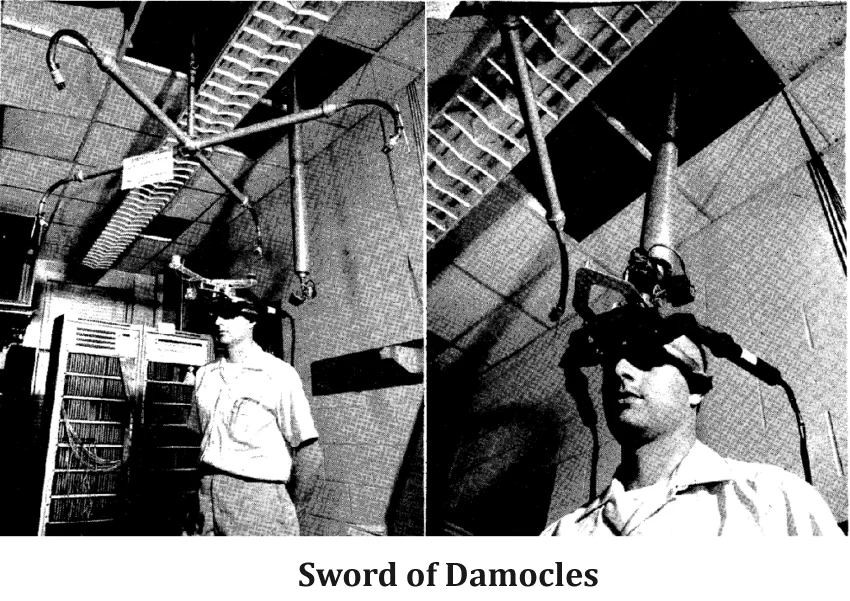
In the galaxy of technology, Virtual Reality (VR) stands out as a shining star. It is a technology that has brought revolution in the field of technology. It is a one of the innovations in the field of technology that has made a huge impact on the world. Like entering an entirely different dimension, the way we encounter things online is changing as VR advances beyond what we previously seen in movies and books. We’ll go further into the fascinating realm of virtual reality in this blog article. We’ll look at all the many things it is capable of, how it is altering key sectors, and what wonderful things are to come.
A Brief History of Virtual Reality
Every technology or any other development that we come across has been a result of some innovative thoughts and hard work. Therefore, let’s go back down the timeline and explore about the history of the Virtual Reality. The concept of virtual reality first time came to the surface in the early 1900s. Intellectual people like Morton Heilig and Ivan Sutherland who played a big part in making VR what it is today.
- Morton Heilig and the Sensorama (1957): In 1957, a clever guy named Morton Heilig, who worked with movies, made something called the Sensorama. It is a machine that gives you a feeling of being at different locations. It had special screens that showed things in 3D, speakers for sound, and even scents to make it all seem real. It was like an early version of the awesome experiences we have with VR today.
- The First Special Helmet (1968): In 1968, another super smart person named Ivan Sutherland created something called the “Sword of Damocles.”
 It was like a special helmet with a screen in front of your eyes. This was the beginning of what we now call VR headsets, even though they were big and not very comfy back then. But they laid the foundation for the cool headsets we have now!
It was like a special helmet with a screen in front of your eyes. This was the beginning of what we now call VR headsets, even though they were big and not very comfy back then. But they laid the foundation for the cool headsets we have now! - Virtual Reality in the Digital Age: As the digital era progressed in the 1990s, businesses like Sega, Nintendo, and Virtuality introduced VR game platforms. Unfortunately, due to technological limitations and exorbitant prices, these early initiatives had little success.
The Virtual Reality Revolution
Early in the twenty-first century, developments in processing power, display technology, and motion tracking came together to provide immersive experiences that were both approachable and fascinating. The real VR revolution had only begun at this point. The laws of the game were changed with the introduction of user-friendly and affordable VR gadgets like the Oculus Rift, HTC Vive and PlayStation VR.
- Unmatched Immersion: VR’s ability to thoroughly immerse users in virtual worlds—something that was previously unimaginable—is its distinguishing characteristic. In a new realm where you may interact with things and places as if they were real, wearing a VR headset takes you there.
- Learning Through Experience: Education has emerged as a prominent arena for VR. Medical students can practice virtual surgeries, history enthusiasts can explore ancient civilizations, and aspiring pilots can take to the virtual skies. VR is redefining how we learn and acquire new skills.
- Therapeutic Potential: VR has demonstrated its therapeutic potential in various fields. Patients can confront and overcome phobias, manage pain, or regain mobility through carefully designed virtual experiences.
The Multifaceted Applications of VR
While VR gaming remains a significant driver of the technology’s popularity, its applications extend far beyond the realms of entertainment. VR is a versatile tool that has found its way into numerous domains, enhancing experiences and driving innovation.
- Virtual Tourism: Unable to travel? Virtual reality allows you to go to far-off places without leaving the comfort of your home. You can tour the Great Barrier Reef, the Egyptian pyramids, or the Tokyo alleyways right from your living room.
- Architecture and design: Using VR, architects and designers can develop and tour virtual buildings, making it possible to make changes in real-time before actual construction ever starts. This results in more user-friendly and efficient designs that also save time and money.
- Staff Training: In industries like aviation, manufacturing, and healthcare where accuracy and safety are key objectives, virtual reality (VR) is swiftly becoming an essential tool for staff training. Simulated environments allow trainees to practice their skills without real-world consequences.
- Environmental Awareness: VR can foster a deeper understanding of environment related issues by immersing users in the ecosystems they need to protect. For example, users can experience the effects of climate change firsthand by witnessing virtual polar ice melting or deforestation.
The Future of VR
Due to the rapid advancement of technology, VR has limitless possibilities in the future. Let’s move forward and investigate some of the fascinating future events:
- Social Interaction: In today’s world, VR has the power to fundamentally alter how we engage with one another. Imagine bridging the physical distance by engaging in virtual conferences, events, and even dating.
- Art and Creativity: Artists are pushing the boundaries of VR. They use it to create breathtaking, interactive, and 3D works of art that defy conventional mediums. VR art galleries are already a reality, offering visitors a truly immersive experience.
- Mixed Reality: The integration of augmented reality (AR) with VR is on the horizon. It is promising to blend the digital and physical worlds seamlessly. This convergence could redefine how we interact with our surroundings and digital information.
Conclusion
In conclusion, Virtual Reality has transcended its status as a fleeting technological trend. It has become an indomitable force that reshapes how we live, learn, work, and play. From its humble origins to its contemporary applications, VR has traversed a remarkable journey. However, the journey is still very much ongoing. Innovation will push the boundaries of technology as it develops further, bringing new possibilities to light. VR promises experiences and opportunities that we can scarcely imagine today. So, whether you’re strapping on a headset for gaming, education, therapy, or exploration, remember that you are not just embracing a technology. But you are stepping into the uncharted realms of Virtual Reality. It is where the only limit is the extent of human imagination.

 It was like a special helmet with a screen in front of your eyes. This was the beginning of what we now call VR headsets, even though they were big and not very comfy back then. But they laid the foundation for the cool headsets we have now!
It was like a special helmet with a screen in front of your eyes. This was the beginning of what we now call VR headsets, even though they were big and not very comfy back then. But they laid the foundation for the cool headsets we have now!